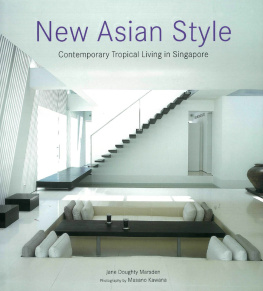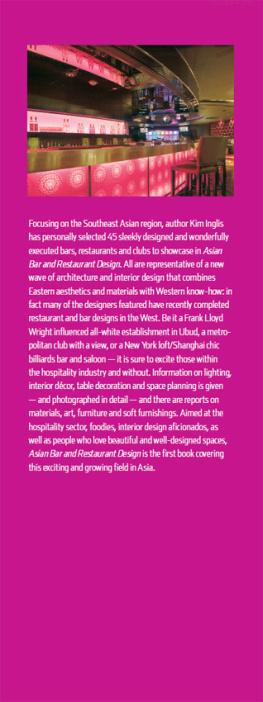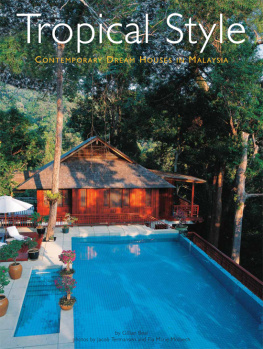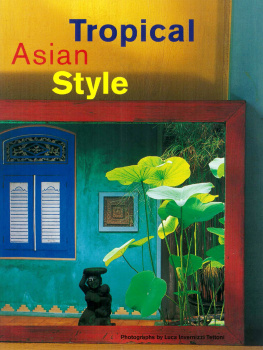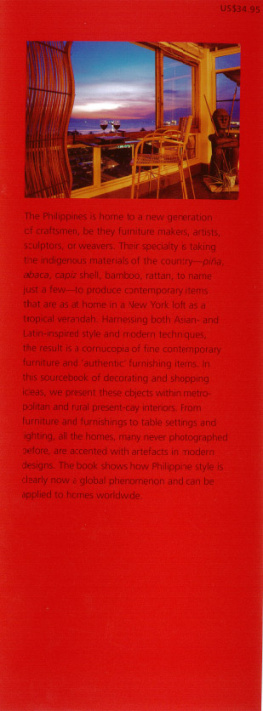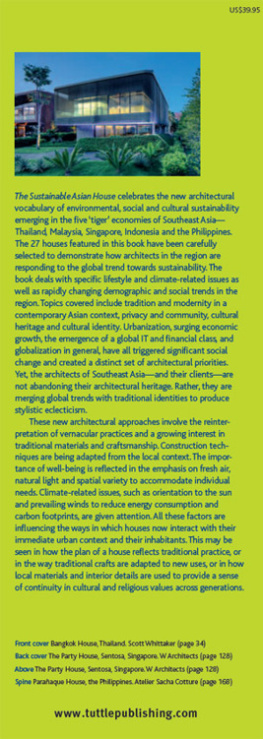A Little Romance
Elevating eclecticism to a style in its own right, Callie Peet filled her 1935 East Coast terrace house with recycled Asian pieces and beloved family heirlooms. "I don't care for modern or ordinary furniture that has no character and is strictly functional," says the Minnesota-born graphic designer/artist who lived in Singapore for four years. "I like old things with a sense of history and romance. And I have a sense of humour and adventure; I like my rooms to look fun."
Chinese, Indonesian, Tibetan, Balinese and French furniture and accessories merged in this quirky, comfortable oasis which seemed somehow removed from everyday ugliness. Callie replaced all the fluorescent bulbs with low lighting and kept rubbish bins and anything plastic out of sight, for instance. "I also love warm, rich colours and am not afraid of having many colours in one room," notes the ceramic artist who is inspired by sojourns in Asia, Italy and Mexico.
While traditional architecture blessed the interior with tall ceilings for ventilation and charming French-style double wood doors, it omitted built-in closets or any sort of storage space. Callie turned this to her advantage by collecting cabinets of all shapes, sizes and colours. Three lacquered reproduction Chinese wedding cabinets-green, yellow and red-act as a kitchen pantry, television and stereo cupboard and linen closet respectively. One of these, an old teak and glass display case in which its former owners had kept clothes, became her tableware cabinet. "When you have things you love, that are beautiful and fun, it's a waste to keep them where they can't be seen and enjoyed," she says.
Most of her pieces continue to 'work' back in the US, where she now lives in a log cabin at the base of the Rocky Mountains. Callie managed to sell her former gardening cupboard, an old wayangkulit puppet cabinet, to a doctor "for a lot more than I paid for it". "It now sits in her waiting room and contains extra medical supplies." And the crockery cabinet? "I had that made into two separate pieces-there is no way it would fit in your standard American home, the ceilings aren't tall enough."
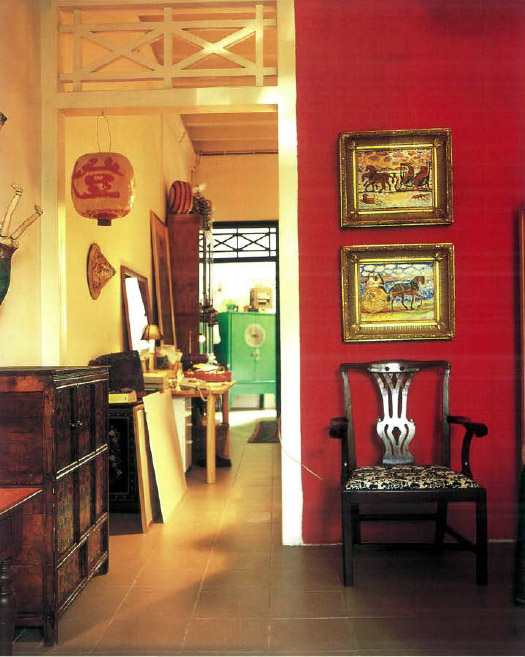
First impressions. Upholstered in a hand-dyed, indigo and white cotton fabric found in Shanghai, this early 19th-century, Chippendale-style, walnut chair in the living room is the first thing seen on entering. It belonged to Callie's grandmother. The same fabric is used for the throw cushions on the sofa. The oils above the chair are of Callie's grandmother by Callie's aunt, Trudy Peet.
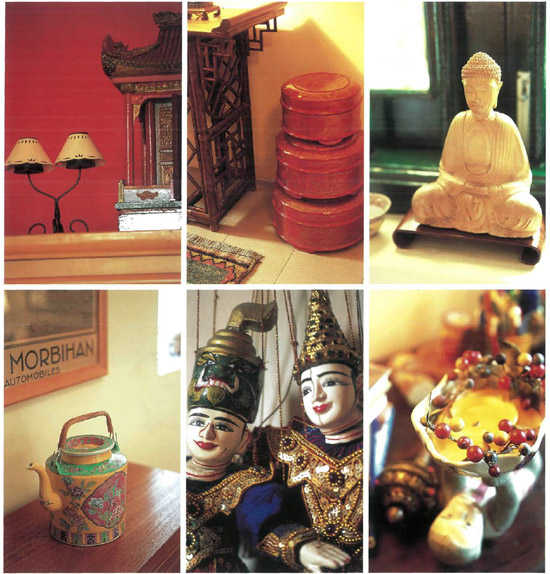
A miniature Thai temple and Parisian lamps on top of a Chinese yellow wedding cabinet; next to an old elm and bamboo altar table (Just Anthony) in the dining room are three Vietnamese lacquered containers which a groom-to-be is required to present full of food to the bride's family before a wedding; a sandalwood Buddha sits on a window-sill by the front door in the living room "keeping peace over the whole house"; a ceramic monkey, made in China, holds a dish containing a candle and berries; Thai puppets bought for S$8 each at Bangkok's weekend market hang near the front door; an old lithograph collected by Callie's grandfather during World War II, advertizing a railroad trip in France, hangs above a hand-carved minibar cabinet from Thailand on which rests an inexpensive Chinese teapot.
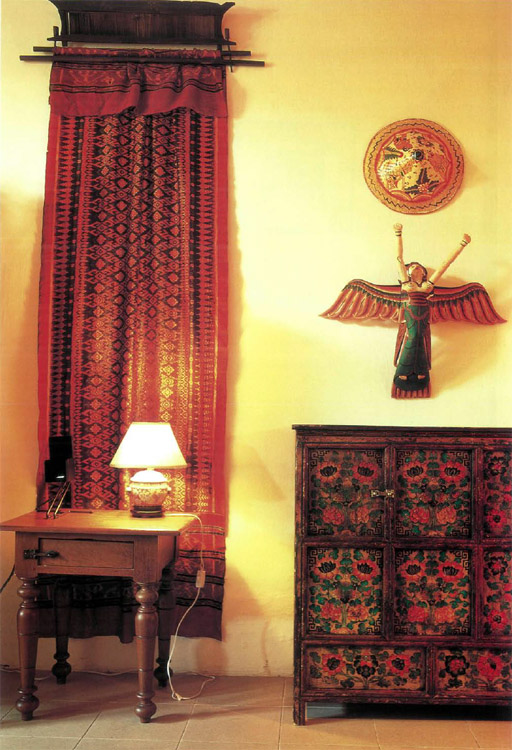
Across from the living-room sofa, a composition of treasured objects invites restful contemplation: a piece of handwoven silk from Cambodia; a Balinese hat; an antique carved wooden angel from Bali; a 19th-century Tibetan cabinet (Lopburi, Singapore); and a little teak table from a shop in Dempsey Road, Singapore.
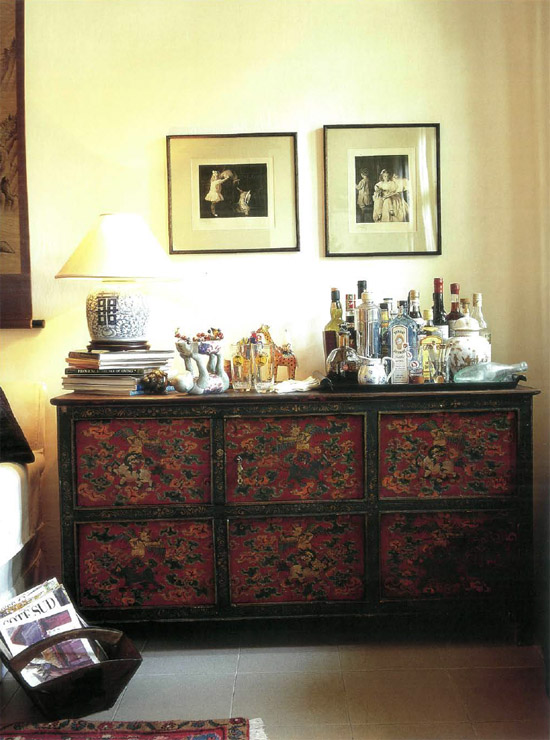
In the living room, a 19th-century, hand-painted cabinet from Tibet serves as an 'open bar', supporting bottles and bar accessories including vintage Singapore glasses for Tiger Beer and Kickapoo Joy Juice. Sepia-tone photographs of Callie's grandmother and her brother taken in 1908 in St Paul, Minnesota hang above.
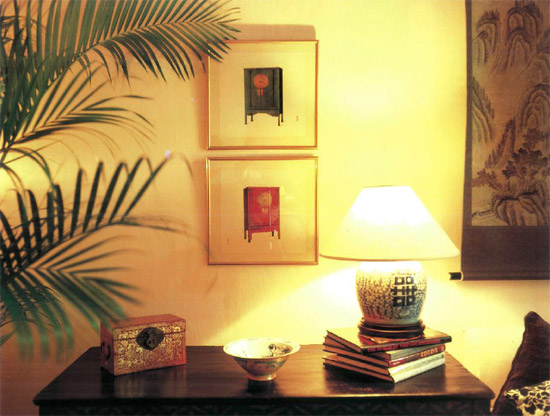
Recurring theme. Two small pictures of Chinese wedding cabinets and a Chinese scroll painting, one of three purchased for a song from a street vendor at Chinese New Year, hang on the living-room wall.
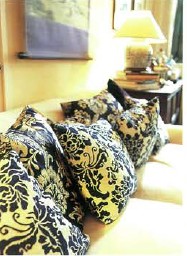
Callie made these striking cushion covers from narrow bolts of inexpensive blue and white cotton fabric common in Shanghai.
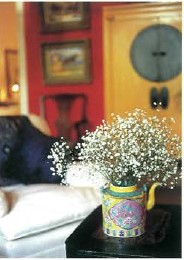
A dynamic contrast to the red wall, a yellow lacquered Chinese wedding cabinet from Just Anthony, Singapore, contains laser discs and other entertainment accessories in the living room. A Chinese teapot from Thow Kwang Industries, Singapore makes a fun vase.
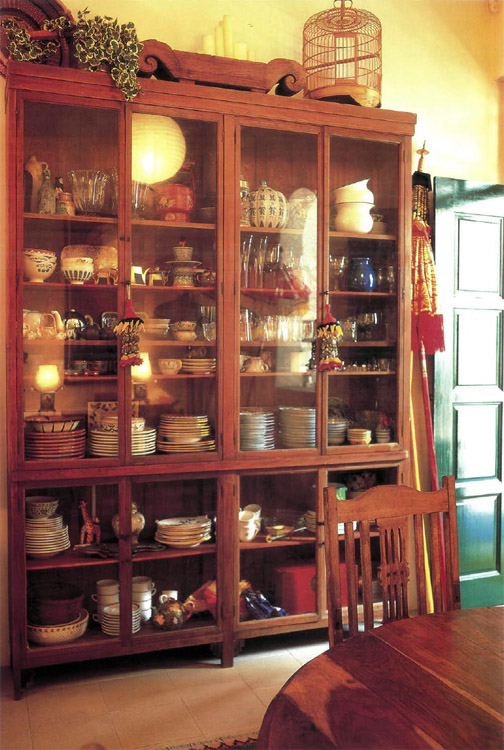
Case study. A teak and glass display case from an old laundry showcases crockery and glassware. "I loved arranging my treasures inside that glass cabinet, it was sort of an art project for me," recalls Callie.
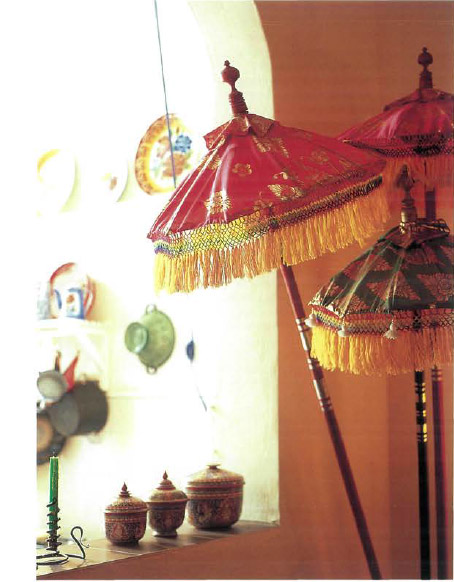
In a corner of the dining room, festive Balinese umbrellas are arranged like flowers in an urn. In the arch-way separating dining room and kitchen, three Thai-style domed ceramic jars, bought at Chatuchak Weekend Market in Bangkok, contain small kitchen items such as tea bags.
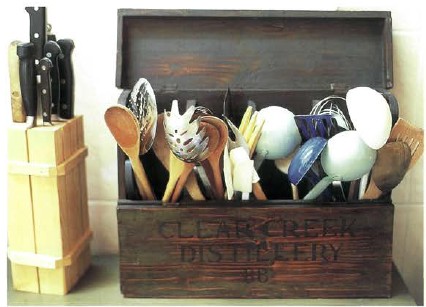
An old wooden wine box (from Asia Passion along Dempsey Road, Singapore) stores kitchen utensils.
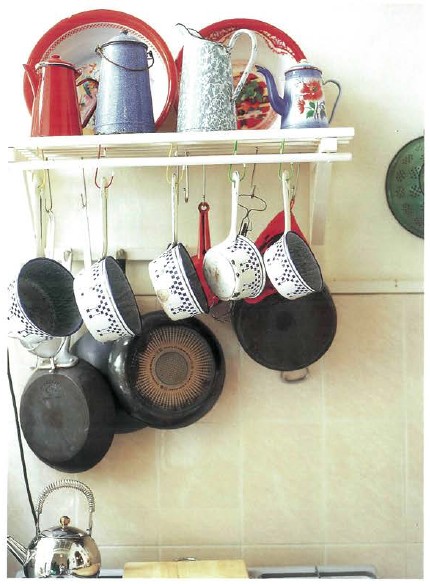
Pot-pourri. Enamel pots from a French fleamarket hang from a rack, above which sit colourful round trays ("always cheap and great to take to parties as they don't break") from Singapore, Thailand and Vietnam. An avid cook, Callie loved the large and sunny kitchen that had ample wall space for her enamelware and other kitchenware. "Almost the entire ceiling opened up using a corrugated plastic sliding roof system," she recalls. "Once I left it open when it rained-which happens suddenly in Asia-and that was rather exciting."
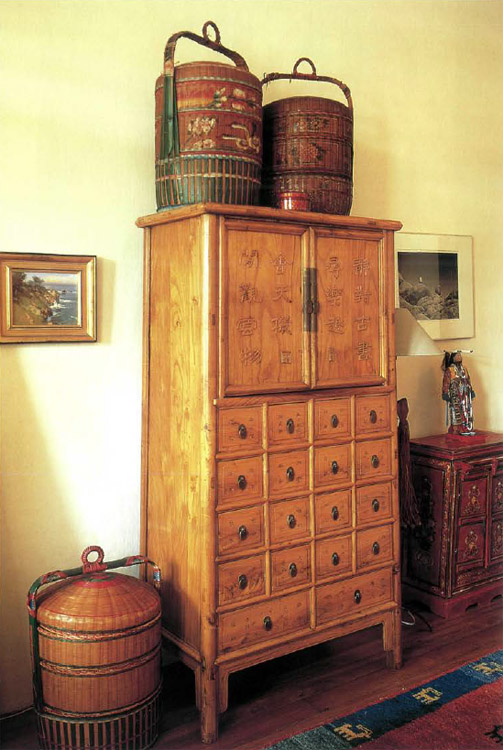
Opposite the bed, a Chinese elm medicine chest, from Just Anthony, conceals a small television in its top cabinet. Purchased from an antique shop in Malacca, Malaysia, rustic baskets-originally used to carry food to Chinese weddings-store belts and scarves.

